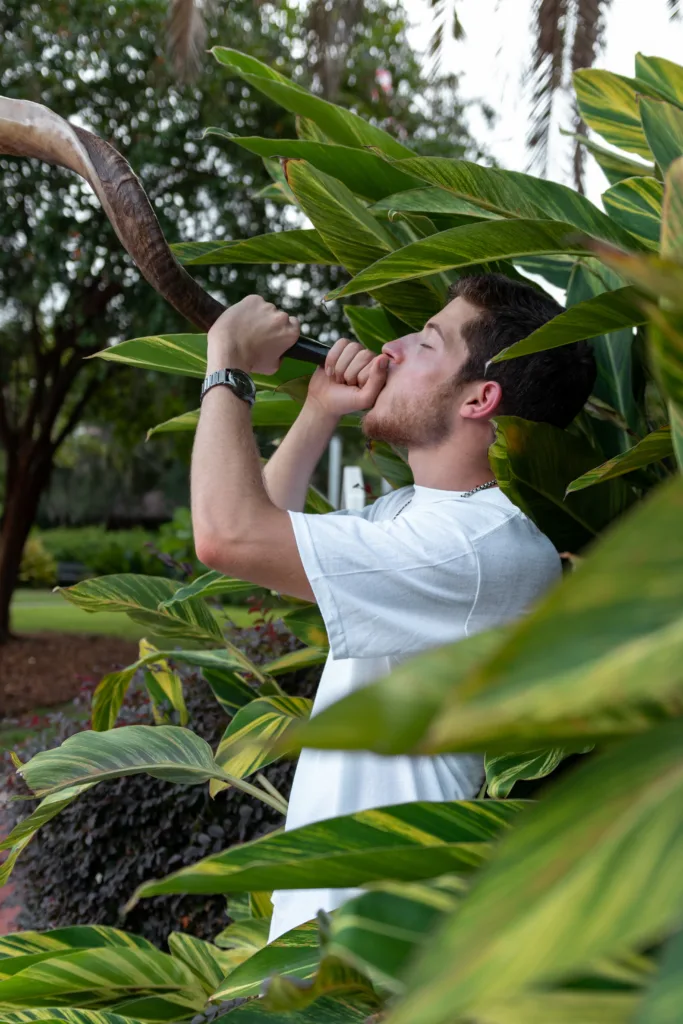What is Rosh Hashanah?

What is Rosh Hashanah?
Rosh Hashanah marks the beginning of the Jewish calendar, which is entering the year 5784, and is celebrated as the Jewish New Year. The Jewish year begins in the fall with the month of Tishrei, and Rosh Hashanah occurs on the first and second days of the month of Tishrei.
Rosh Hashanah and Yom Kippur, the Day of Atonement that follows ten days after Rosh Hashanah, are known as the Days of Awe. In Jewish thought, Rosh Hashanah is also considered to be the Day of Judgement and the day when the world was created. All these aspects focus on the transition from the old year to the new, from reflecting on and repairing mistakes and challenges from the past year, to setting goals and hopes for the new year.
Traditional Ways to Observe Rosh Hashanah:
Rosh Hashanah traditions are as ancient and varied as the Jewish people. Here are some of the traditional observances and practices for Rosh Hashanah:
- Many people spend Rosh Hashanah in prayer and reflection on the past year and gather with friends and family to celebrate the beginning of the new year.
- The shofar, a ram’s horn crafted into a rough instrument, is blown on Rosh Hashanah to ground the people listening in the present moment and to call them to action on this day of reflection and growth.
- There are a number of special foods associated with Rosh Hashanah, the most famous being apples and honey! Apples are dipped into honey and eaten as a symbol of hope for a sweet new year. Pomegranates, dates, and gourds are some of the other symbolic foods eaten on this holiday; each carry a hope and blessing for the new year. Some families and communities even host a Rosh Hashanah Seder, centered around these symbolic foods.
- Tashlich is an ancient practice that symbolizes the clean slate that we hope to achieve for the new year. Tashlich is practiced at the banks of a flowing body of water and involves a special prayer that symbolizes the throwing away of past failures and sadness into the water.
Setting Intentions for the New Year:
In addition to Rosh Hashanah’s traditional practices, the New Year can be a time for setting intentions and practices that focus on wellness and joy for the upcoming year. Here are some suggestions for a gentle beginning to a sweet new year:
- Start a self-reflection journal. Take five minutes a day to write down a moment of gratitude, a challenge you faced, or something that brought you joy.
- Reverse Tashlich, a program available on many college campuses and in many Jewish communities, combines the traditional practice of Tashlich with the Jewish value of caring for the earth. Reverse Tashlich programs bring together a group of people to clean up a local body of water. You can find out more about Reverse Tashlich and start one on your campus or in a community near you with resources from Repair the Sea.
- Reach out to friends and family you may have lost touch with and thank them for being a part of your life. Take this time to think about connecting with new friends and new opportunities for joy and growth in your life.
Across the world, all kinds of Jewish people find meaningful ways to welcome the new year with their families, friends, and communities. May this year be filled with joy, abundance, and connection. Shanah tovah, best wishes for a sweet new year!